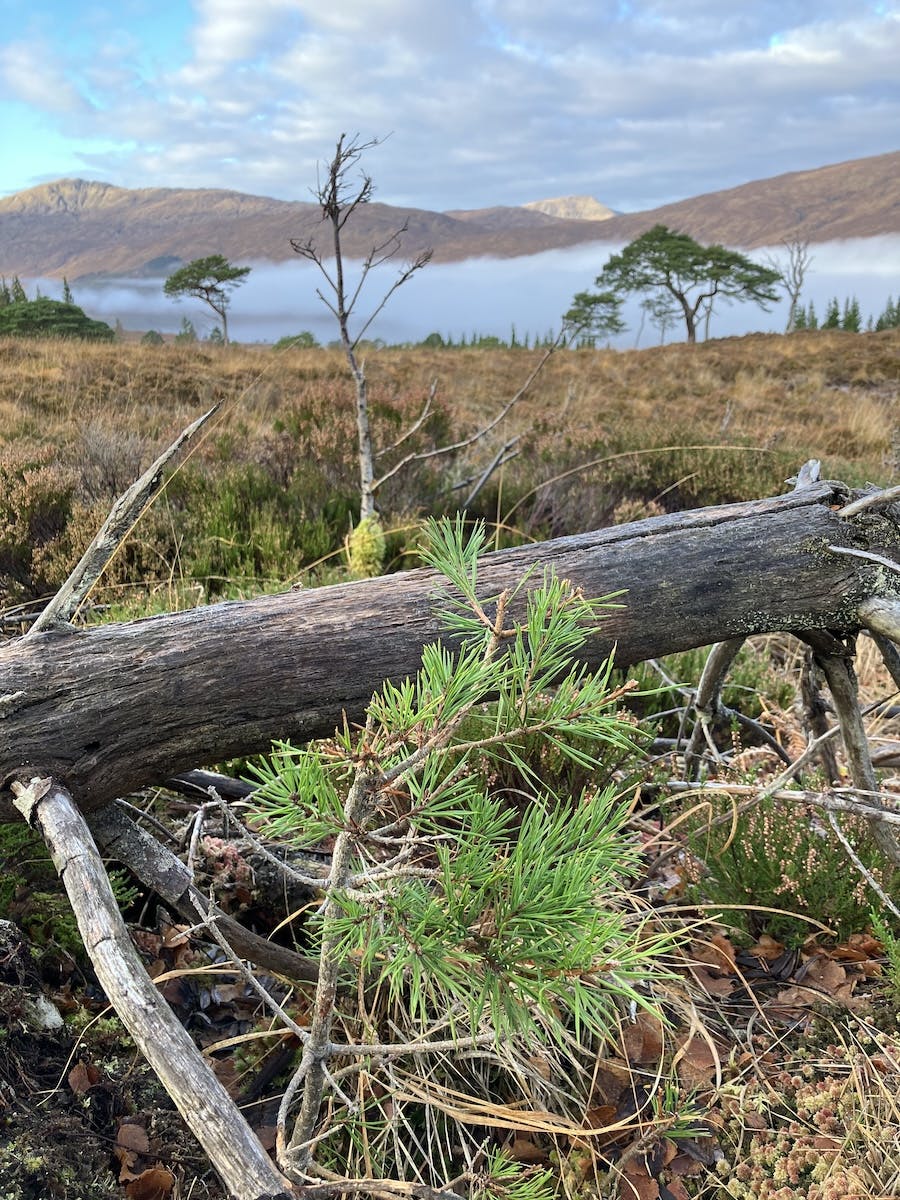We're making good progress on our partnership project with Arkaig Community Forest to remove non-native conifers from an area of ancient Caledonian Pinewood in Lochaber, Scotland. So far, our members have funded the removal of over two thirds of the lodgepole pine (Pinus contorta) and sitka spruce (Picea stichensis) from Arkaig Community Forest’s 20.5ha area of Loch Arkaig Pine Forest.
This year, Simon Dakin of Blue Green Forestry will continue the removal of the remaining non-native conifers from the pinewood using traditional methods with his Comtois horse, Tarzan. Initially, they thought this would take them two further felling seasons, but they now think they will be able to complete the works by spring 2025 because of the progress made last year using more conventional, low-impact machine harvesting methods. This will also make removing the timber on the custom-made barge less logistically challenging because the temporary slipways will only be in place for so long.
Now that the non-native woodland cover has been significantly reduced throughout the forest, the priority for land managers is ensuring that low browsing levels are established and maintained so that the pinewood can continue on the long road to regeneration. This is quite a challenge, especially when the total forest area is around 1,027ha!
To monitor browsing pressure and inform management, an annual Woodland Herbivore Impact Assessment (WHIA) is undertaken by the Woodland Trust Scotland (WTS). This includes the part owned by ACF where our project is situated.
This year, the WHIA showed that browsing pressure in the pinewood is still moderate-high, the same as in 2023. However, it’s hoped that current operations to remove non-native conifer blocks, undertake deer culling and carry out maintenance of old fences will see impacts fall to levels similar to those in Glen Mallie, a nearby pinewood also managed by ACF and WTS, that this year fell to low.
